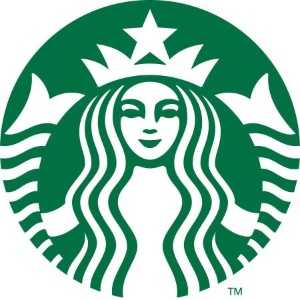The impact Nantucket Island had during this time was equally as important. The whaling industry flourished there, because whale oil was a much stronger illuminant than previously made lamp oils or candles, sparking a drastic change in the nightlife for the Western and European world.
Before the Folger Family became associated with coffee, however, they did contribute as whalers, most likely because of their ties with the Starbuck Family. The roaring demand for whaling continued, until around the mid 1800s, which was the very same time the Folger family began planning their Coffee Mill Company. Although Coffee was readily available in America it was still considered a luxury, and Folgers brought it forward all the way out west in California, obviously not wanting to deal with the troubles they saw firsthand surrounding Massachusetts and Britain.
 The original Starbucks logo shows its fishy past.
The original Starbucks logo shows its fishy past.
Reeling it in
Today, the most widespread coffee house in the world is Starbucks, yet they hold no affiliation with Folgers Coffee, or with the Starbuck fishing family. Yet, knowing now the history between the two families, the fish related symbolism in Starbucks Coffee starts to seep through. For one, the company opened its first location in Seattle Washington, in the fishing district known as Pike’s Place Market. And their original logo depicts a mythical mermaid known as the “Twin Tailed Siren”, while the updated one we see today has a woman holding on to two faint fish tails.
There is no telling why Starbucks would hide behind a mere novel, essentially watering down the cream of its own heritage. Is it just easier for a company to act independently, rather than deal with centuries of accumulated wealth? Could the woman of renown gracing the Starbucks logo actually be Mary Coffin, as a tribute to the legacy she built on Nantucket Island? Whatever the answer is, such a fish-coddling aroma should help you wake up and smell the coffee!
Source: [via]


















